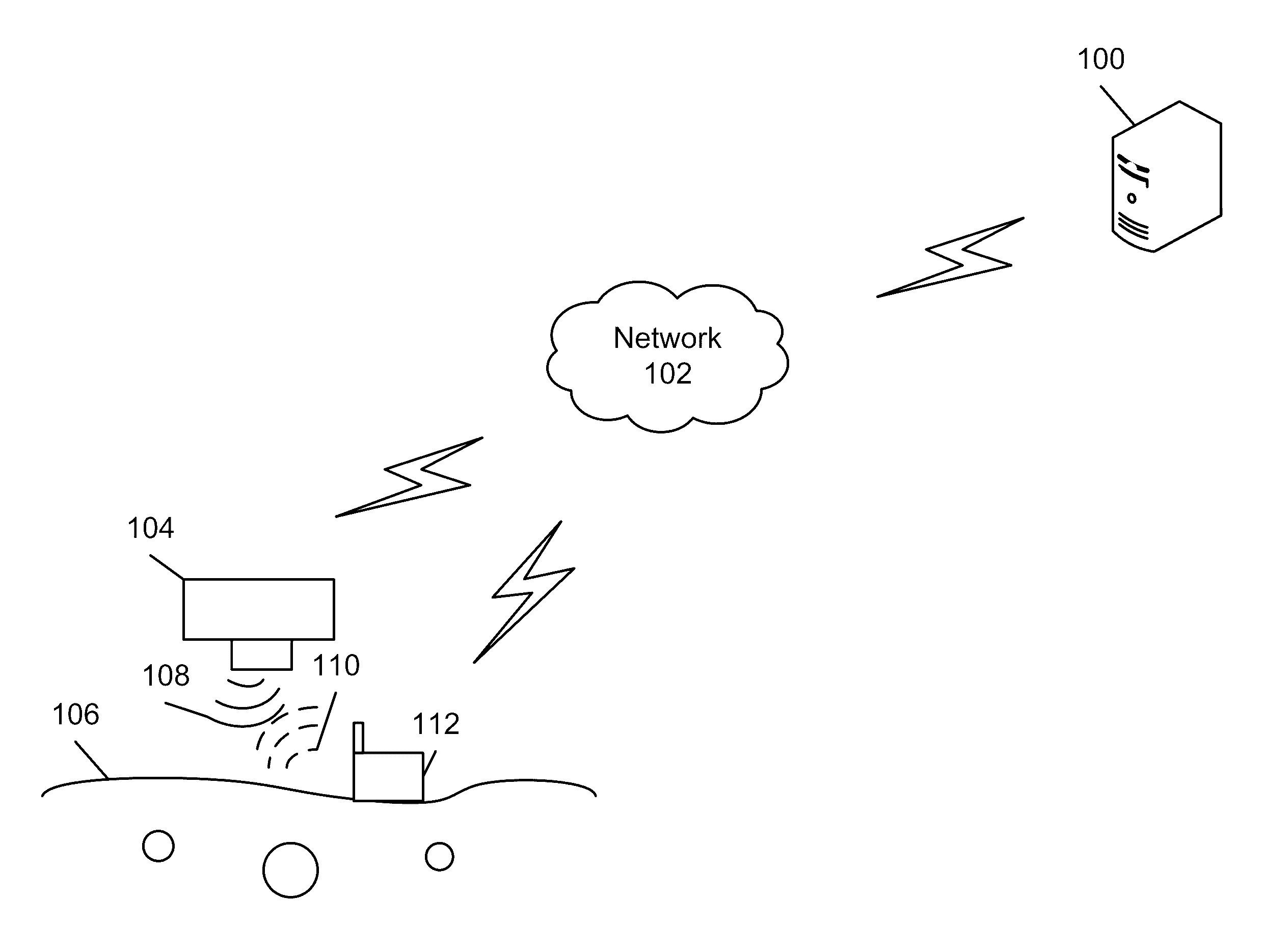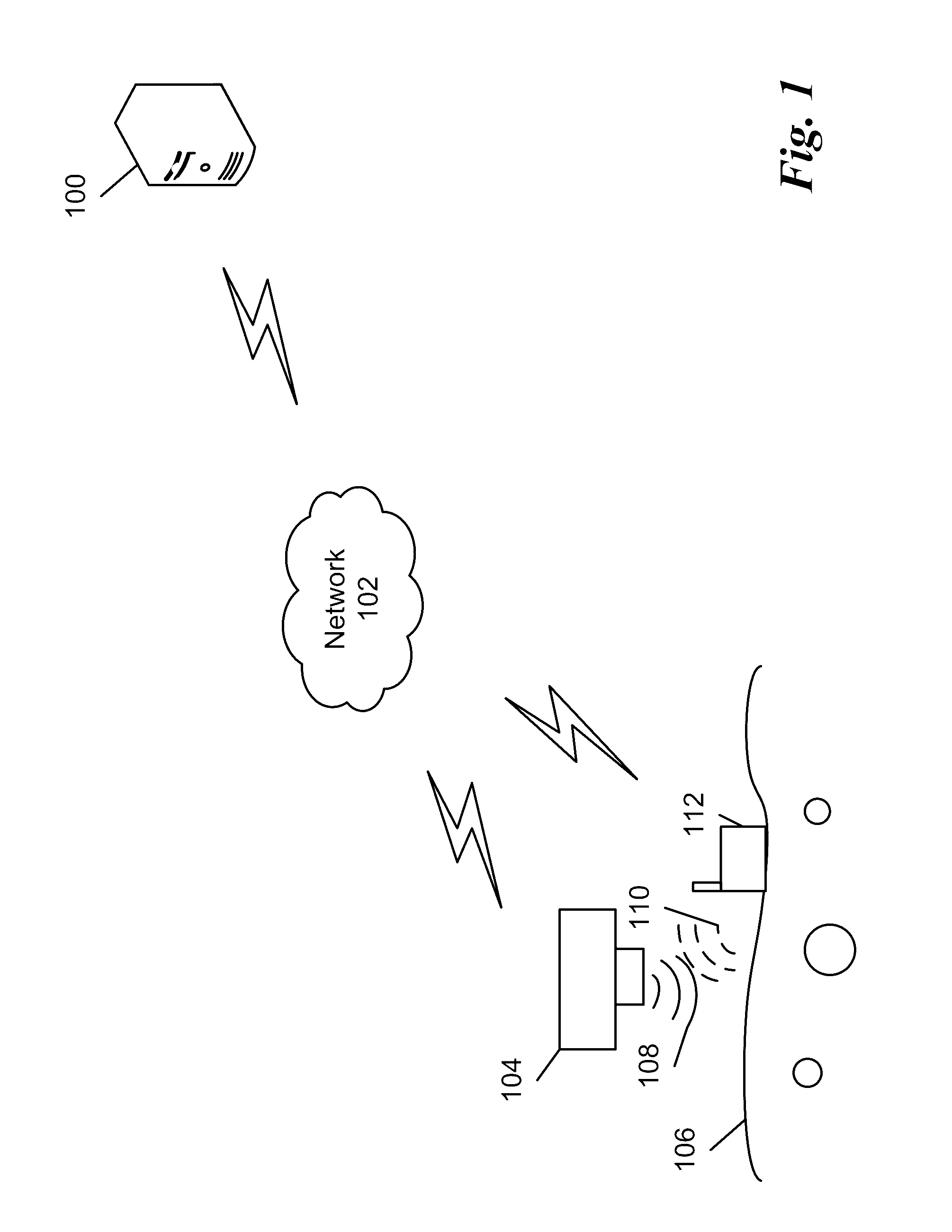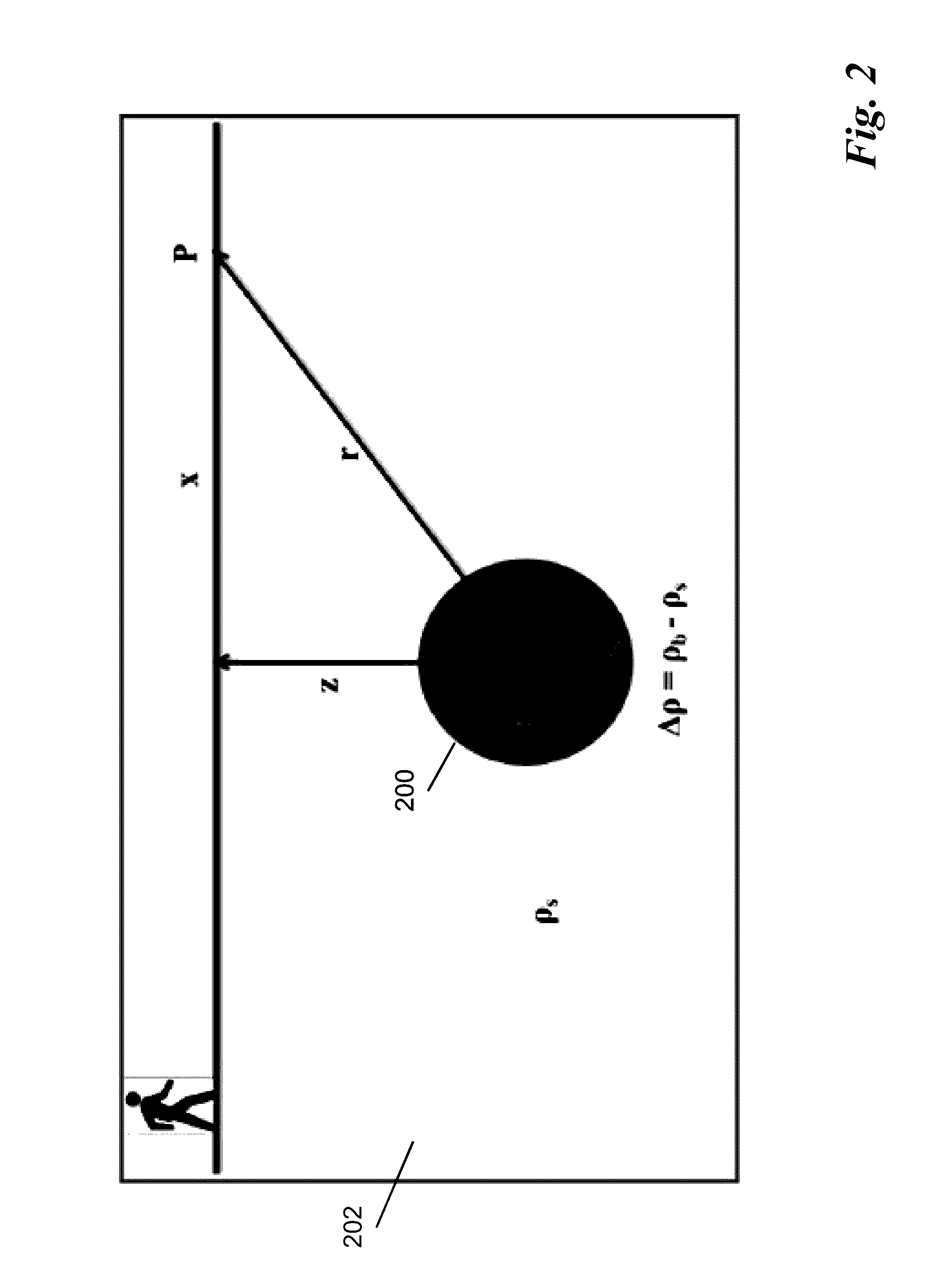Method and system for characterization of subsurface cavities using joint inversion of gravity and ground penetrating radar data
a technology of subsurface cavities and radar data, applied in the direction of reradiation/reflection, gravitational wave measurement, radio wave reradiation/reflection, etc., can solve the problems of acute geohazard, large population loss, and a risk to developed land
- Summary
- Abstract
- Description
- Claims
- Application Information
AI Technical Summary
Benefits of technology
Problems solved by technology
Method used
Image
Examples
Embodiment Construction
[0045]Referring now to the drawings, wherein like reference numerals designate identical or corresponding parts throughout several views, the following description relates to a subsurface cavities system and associated methodology for characterizing subsurface cavities using gravity and ground penetrating radar data.
[0046]Detection of cavities is possible using geophysical methods because the presence of a cavity changes the physical properties of the subsurface rocks and causes a physical contrast between the cavity materials and the surrounding environment. Gravity methods measure a lateral variation in the vertical component of the gravitational field at the Earth's surface. The lateral variation in the vertical component of the gravitational field is due to the subsurface density distribution. Moreover, the gravity methods are appropriate to the investigation of subsurface geological features, such as tracing of geological boundaries and mapping of sedimentary basins. The caviti...
PUM
 Login to View More
Login to View More Abstract
Description
Claims
Application Information
 Login to View More
Login to View More - R&D
- Intellectual Property
- Life Sciences
- Materials
- Tech Scout
- Unparalleled Data Quality
- Higher Quality Content
- 60% Fewer Hallucinations
Browse by: Latest US Patents, China's latest patents, Technical Efficacy Thesaurus, Application Domain, Technology Topic, Popular Technical Reports.
© 2025 PatSnap. All rights reserved.Legal|Privacy policy|Modern Slavery Act Transparency Statement|Sitemap|About US| Contact US: help@patsnap.com



